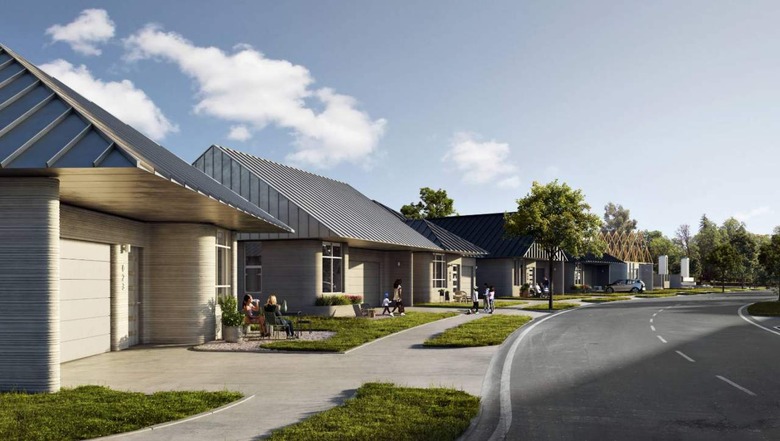ICON And Lennar Plan To 3D Print An Entire Texas Neighborhood
ICON, a company that specializes in 3D printing-based construction technologies, has teamed up with home construction company Lennar to announce an ambitious new project: 3D printing an entire neighborhood of houses in Texas. The project will break ground in 2022, according to ICON, which says it'll leverage its technologies to help build 100 homes in a new community co-designed with the architecture firm BIG-Bjarke Ingels Group.
Additive manufacturing, the term most commonly used for large-scale manufacturing and construction based on 3D-printing technologies, has proven useful in multiple industries, including building construction and aerospace. The newly announced project is ICON's most ambitious to date, underscoring the usefulness of additive manufacturing for speeding up building construction while reducing home cost, sidestepping traditional material shortages, and minimizing waste.

Among other things, ICON says its 3D printing construction technology opens the door for enhanced design freedom compared to traditional home construction, meeting the International Building Code standard with an anticipated longer lifespan compared to ordinary houses. The company says its 3D-printed homes are stronger and more resistant to extreme weather compared to houses made with traditional materials.
Assuming the project proceeds as expected, ICON and Lennar's upcoming Texas neighborhood will be the largest 3D-printed community in the world. Additional details on the neighborhood, including when the first houses will be completed, weren't provided. ICON did, however, provide a couple of design renders offering the public a preview of the unique homes and the overall community design.
BIG-Bjarke Ingels Group partner Martin Voelkle said about the new project:
By partnering with ICON and Lennar, we are able to see this new technology roll out to the widest possible audience. The 3D-printed architecture and the photovoltaic roofs are innovations that are significant steps towards reducing waste in the construction process, as well as towards making our homes more resilient, sustainable, and energy self-sufficient.
